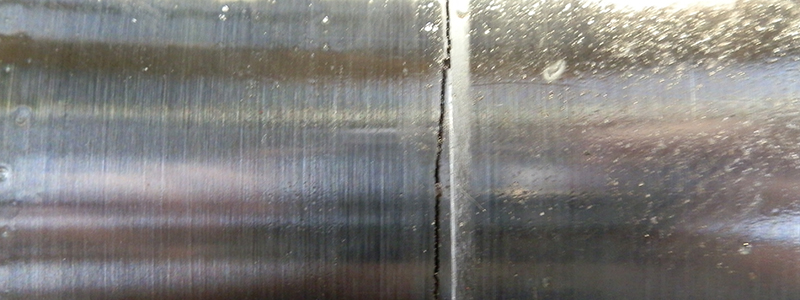
In general used toggle type injection molding machine, it seems the tie bar or column is easier to break compare to full hydraulic type machine, What is the reason?
In the design of the toggle type, the rigidity of the system must be considered, because the toggle type generates the clamping force by rigidity, the diameter of the tie bar normally comes with bigger size diameter. But even by that the tie bar is still easy to break, especially in certain industries, like fast food knives and forks. This kind of thin wall product injection normally with good material flow index and large molding area, also fast production speed requirements, with more serious problem, the template may also broke. The below reason may can explaine for that
1- Fatigue failure
The working process of the injection molding machine is the process of alternating stress, so any factor that causes stress concentration may cause fatigue damage. Such as:
1) The step where the shaft diameter changes greatly.
2) There is a lack of rounded corners and undercuts at the transition.
3) Surface scratches or thread machining accidentally damage the optical axis surface.
4) The thread surface roughness not good.
5) The thread is pressed for a long time, and the surface is damaged due to insufficient surface strength (at the adjusting nut).
6) Improper heat treatment on the thread surface causes stress concentration.
7) Material defects.
2- Overload break
Since the toggle lever is deformed by four tie bars to obtain the clamping force, if the four tie bars have different lengths, the deformation will be different. For example, if one of the four tie bars is shorter, the shorter tie bar may bear much more Withstand 1/4 clamping force, which leads to breakage.
3- Temperature strain causes breakage
If the four tie bars have different lengths, for example: one long and three short, then the longer tie rod is constrained by the other three rods due to the thermal stress caused by the sharp temperature increase or decrease, and it will be in an indeterminate state, which will cause the tie rod fracture.
4- Pull-off caused by compound strain
If the mold is not flat, the combined error of the length of the connecting rod (hinge), the height of the bearing seat and the length of the tie rod is too large. When the connecting rod is straightened, the forces on both sides are uneven. Then:
1) The rear formwork swings and the tie rod is bent. The tie rod is easily broken under the action of bending stress and tensile stress.
2) As a result of product flashing, operators who are generally inexperienced will further increase the clamping force, resulting in overloading of the pull rod and deformation of the mold.
5- Damage caused by instantaneous impact stress
Because the clamping force of the toggle type can be released before the mold is opened, so:
1) The instantaneous impact during mold opening causes vibration of the machine and damage to the tie rods and other parts.
2) As the entire mold clamping component (including the mold) is kept under stress for a long time, it will cause premature fatigue failure of the part.
And so, what we can do about it or to prevent the tie bar from broken? Below some advise
1- In the design, it is necessary to avoid the sharp change of the shaft diameter. At the step or undercut, try to use a large round corner transition, choose a material with better comprehensive performance, and special treatment should not only solve the hardness of the thread surface (to be wear-resistant) and Try to reduce the surface stress concentration, improve the surface finish, and minimize stress damage.
2- It is necessary to ensure the processing accuracy, especially the length of the connecting rod, the height of the bearing seat, the accuracy of the cross head, and the positioning accuracy of the bearing seat on the template.
3- Pay special attention to the length of the four tie bars during assembly or after removing the mold adjustment nut, and the distance between the mold adjustment nut and the rear template must be adjusted.
4- Analyze the reason when the product has flash, do not increase the clamping force unilaterally, if the mold is found to be uneven, it should be smoothed, if the length of the connecting rod is uneven, it should be corrected, including copper pads, paper, etc. Nut.